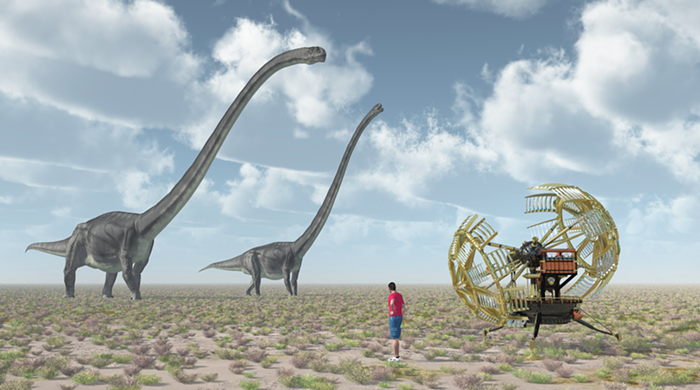It’s not often that the line to enter a public meeting looks like the line outside an exclusive bar. But as over 400 people squeezed into the Acadian ballroom last night for a public meeting about the future of Last Thursday, the crowd spilled out the door and stretched up NE Alberta. A girl in striped tights with bright red hair and bells around her ankles joined the end of the line just as the sun was setting. “Is this the place?” she asked. Of course.

- Zervas
- The spirit of Last Thursday
Adams and Fritz called the neighborhood meeting to discuss the impact of the art event that has grown over the past 13 years from a few fringe artists and ne’er-do-well clowns to a defining aspect of a neighborhood in transition. Over the past year, the city has shelled out $11,000-12,000 a month from May to October to keep Last Thursday clean and car-free. Now it’s up for debate whether the city should continue to foot the bill.
With 10,000 people heading to NE Alberta every last Thursday for five months out of the year, it seems like there would be a way to dig up money to pay for trash cans, portapotties and police. “Unlike every other arts festival in town, nobody runs Last Thursday,” noted city crime prevention coordinator Stephanie Reynolds. “This makes things a little bit complicated because there’s no one person to go to and say, ‘Hey! You! Fix this.’”
Testimony from 60 people spanned over two hours, with the “I love Last Thursday!” to “Boo Last Thursday! People pee in my yard!” ratio working out to at least 10 to1.
Gallery owner Donna Guardino moved onto the street since 1996, when Alberta was “a boarded up Wild West town” where she was afraid to walk down the street. “Now, all month long there are people walking down the street,” said Guardino. Other business owners seconded the opinion, testifying that the event brought in 80 percent of their sales (at an art gallery) and was the equivalent of 13 regular days of business (at Binks bar).

- Roughly 400 Portlanders turned out for the Last Thursday discussion
The issues over Last Thursday are not simple as revelers versus the neighborhood. While some close-in homeowners complained that event-goers leave a delightful trail of urine, shit and beer cans in their front yards, other area homeowners welcome the festival (and its higher property values). “It’s free entertainment for our family,” said homeowner Christa Kaainoa, who enjoys walking through the event with her 19-month-old and four-year-old kids while her 14-year-old busks for change with a violin. “We don’t have a lot of money to head out and do too much for our family.”
Several neighborhood residents suggested a crackdown on outdoor drinking at Last Thursday or moving it to a weekend afternoon. Other members of the public suggested establishing some sort of community board to manage the Last Thursday.
Whatever the city and neighborhood decide to do with the festival, one resident summed up much of the crowd opinion: “We have responsibility to keep something going that has put us on the map.”












